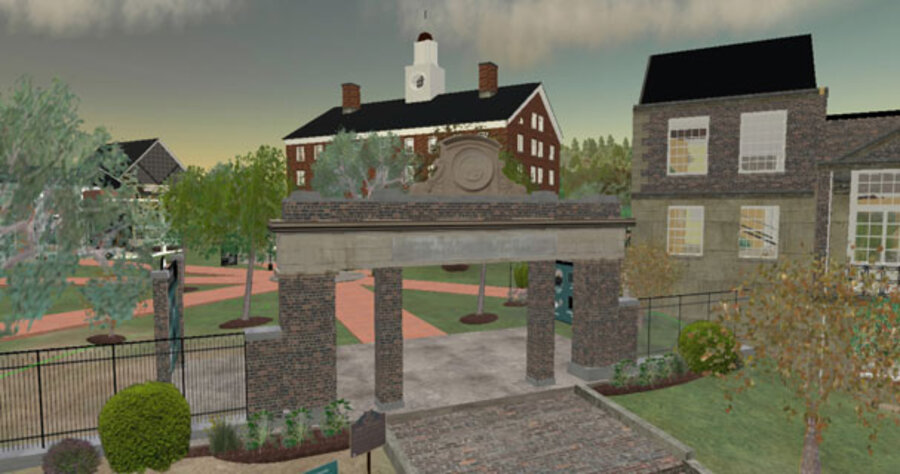Study abroad through Second Life
Loading...
When a group at Ohio University in Athens created a video tour of the school’s virtual Second Life campus, Christopher Keesey expected that it would be, by and large, for the OU community. Yet while browsing YouTube, he found a copy of that same video tour translated into what he thinks was a Nordic language, possibly Danish.
“We didn’t know the person. The person, as far as we know, wasn’t even here, they were in Europe,” recounts Mr. Keesey, project manager of Ohio University Without Boundaries. Now the OU virtual campus receives visitors from around the world who regularly interact with student avatars on the virtual campus commons.
Around the world, universities, and even the US Department of State, are turning to online virtual worlds to create cultural exchanges. In these immersive, 3-D environments, users from around the globe can collaborate in ways that were previously impossible.
“If you learn about a culture ... and your behavior changes in Second Life while you’re interacting with another culture, when you leave the virtual world these processes stay with you,” says Jeremy Bailenson, director of Stanford University’s Virtual Human Interaction Lab in Palo Alto, Calif.
Although virtual-reality advocates say this digital realm is no match for real life experiences, most argue that in the absence of traveling overseas, it is one of the best available means of cultural exchange.
At the Dubai Women’s College, professors saw an opportunity to use Second Life to connect students with the world outside their tiny Arabian Gulf state. As a virtual orientation, the group visited a Second Life re-creation of Darfur and made an online pilgrimage to Mecca. Most notably, they met regularly with a group of Korean students in computer renditions of each other’s campuses to practice English and learn about one another’s culture.
“You couldn’t find two groups of students who are so different, and they were just fascinated by each other,” says Nicole Shammas, an English language teacher at Dubai Women’s College who helped coordinate the exchange.
During discussions, Mrs. Shammas says that, among other things, her students learned to respond respectfully when asked questions deemed inappropriate by their cultural standards, such as how they found boyfriends. Dealing professionally with such faux pas is an important skill for those going into international business.
“Back in the early days of the Web, we all knew that this was powerful stuff and it was going to affect learning. But I don’t think anyone could predict how profoundly it was going to change things,” says Claudia L’Amoreaux, educational programs manager at Linden Lab, the creator of Second Life, based in San Francisco. “We’re at the same point with the 3-D Internet and the immersive world experience of Second Life.”
The US State Department has begun exploring Second Life as a means to introduce people to American culture. Last year, it organized an eight-hour jazz concert that stretched across time zones. Next year, officials may work with Ohio University to coordinate tours of a virtual art exhibit led by the artist’s avatar. Already, several other countries, including Sweden and Estonia, have built cultural embassies in the online world.
“We need to be where the people are as we engage in public diplomacy, and virtual worlds are one of the mediums out there,” says William May, senior IT adviser for the State Department in public diplomacy.





